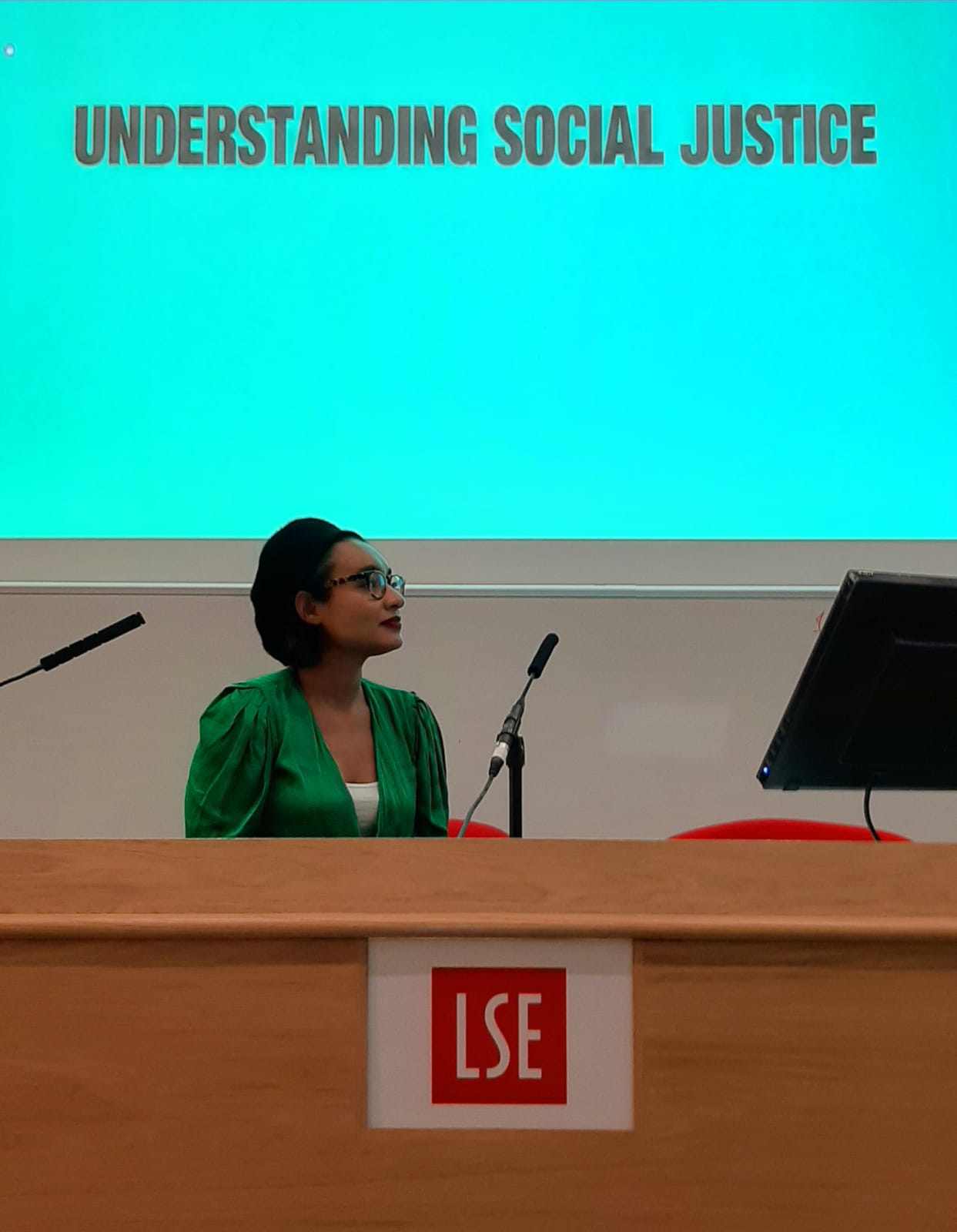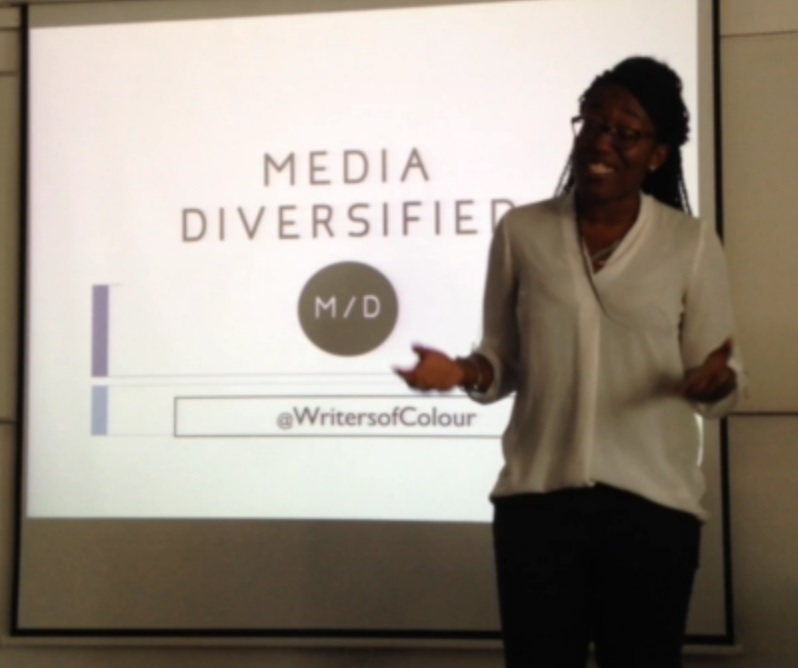In this article, POLIS/Journalistfonden Newsroom Fellow Karin Bromander looks at the conversations around diversity in newsrooms and what strategies are in place to diversify content. By interviewing 15 journalists from Sweden and the UK about how they experience the conversation around diversity at work, it gives a glimpse into how it is discussed at different levels in media organisations. Here we present the second of two excerpts from Karin’s article, along with a link to the full document below.
DOWNLOAD THE RESEARCH ARTICLE HERE
Diversity in journalism: best practices
It would be wrong only to point out the negative things that the journalists interviewed for this piece say about diversity today. The fact is that things are being done, on an editorial level as well as an individual one. Most of the journalists spoken to for this piece have at least some thought-out practices and guidelines they follow, outlined by their employer or, in most cases, of their own invention. The ones who say they don’t give diversity much thought still list a few things they do to make their content more diverse. A few of the interviewees say they give this issue daily thought and that they constantly strive to include the thought of diversity in everything they do.
Three things are most often mentioned. The first is the importance of perspective and questioning your instincts. Before you go after a story, you need to ask yourself why it’s interesting and to whom it’s interesting. If you follow your own interest without thinking, it’s easy to end up repeatedly covering issues that concern yourself, not noticing stories that which doesn’t necessarily affect you or anyone in your sphere.
The second thing is the conversation: journalists need to learn from each other, organisations need to learn from each other, and management needs to be clear on what it is that they want and how it is to be done.
The third thing is hard work. Changing established ways of working, methods which you might have practiced for years and that have been custom to many before you, is hard and it takes time. You need to decide for yourself that the extra time it takes is worth it:
“I guess you could think of it as affirmative action, but I actually think it’s made my reporting better because you know there are loads of amazing people out there that I probably wouldn’t have met if I hadn’t made a bit of an effort. It’s not diversity for diversity’s sake after all, you get better stuff if you talk to more people” –UK internet reporter
On a reporter level
Talk to your colleagues about working methods, in your organisation as well as other media, for instance how you go about finding sources.
The thought on diversity needs to run through all that you do, it can’t come in at the end. You need to think about it before pitching a story, not when you’re trying to find someone to comment.
Don’t just think in new ways, think in old ways: What did we do as reporters before the internet? Listening in on a community meeting might lead you to voices you would never find online. Even if time is scarce, it’s important to try to meet people face to face.
Try new ways in finding stories and sources. It could be just asking everyone you meet – from taxi drivers to relatives to your kid’s teacher – what is relevant to them, what stories do they want told.
Don’t just commit on a superficial level. Instead of contacting 50/50 women and men as possible experts for a piece you’re writing, you need to ensure the actual participants are 50/50 and accept that there might be some extra work in doing that. Don’t fall back on things like men often being quicker to accept, ask again and get more women.
Set up a goal for yourself, something that’s achievable even if you’re under time pressure. It could be inventing new ways of finding sources, as well as not using the same expert twice.
Diversity shouldn’t just be about who, but about how, not just the people but the stories and the angles.
For those working in organisations who rely heavily on tips or pitches from readers or listeners, you need to think about who is most likely to suggest stories – are they representative of the public? Not everyone feel they have the right to to tell their story, to offer their opinion and their thoughts.
What language do you use, what terminology? To truly include new groups and write about their issues you need to consider not just what you write about, but how you write it.
On a management level
*Include all employees in the conversation about diversity. The initiative needs to come from the top, but management need to listen to issues being brought up by staff as well. Suggestions on how to work differently might just as easily come from junior reporters seeing things in a new way.
*Think about possible ways of training staff in skills development and awareness. People sometimes need to be shown concrete examples on how to work differently.
*Invite junior reporters to listen in or to present new suggestions in senior meetings.
*If presenting goals or agendas, make sure the employees actually have the time and resources to think and work in new ways.
*Explore new formats in trying to reach new audiences.
Conclusion
It is troublesome that discussions about diversity and inclusion so rarely appear to actually be inclusive. Perhaps after the Black Lives Matter inspired debate of early 2020 that might change. Whatever conversations are held at a managerial level, they hardly ever seem to trickle down to reporters working further down the organisational ladder. This could strengthen the image that questions relating to diversity are theoretical rather than practical, nice-to-have rather than must-have. As the Reuters Institute report on talent and diversity in modern newsrooms puts it: If top leadership doesn’t embrace and push it – little will happen.
The absence of a shared definition, as well as a clear goal, could further complicate the work for a more diverse media climate – it’s hard to compare what work is being done when different organisations are zeroing in on different things; and it could make it harder for media organisations to work together. It is also harder for individual journalists to give each other advice when different things are expected of them depending on where they work.
It is also evident that the reporters interviewed feel a need for a clear goal as well as an organised way to get there: Some kind of concrete strategy on how to work with diversity. This goes for organisations as well as the individual. There needs to be a thought-out way to work with diversity from beginning to end, it can’t just be applied as a filter just as your article is about to go to print. Several of the people interviewed for this piece feel the organisations they work for rely heavily on the individual’s ability to work in new ways. But if the practices and innovations of individual reporters are what’s being asked for, those reporters need to have the resources to innovate and to have a voice in speaking their mind on how to change things.
The interviews with reporters also show a, perhaps expected, hierarchy in the liberty you’re given to shape your stories: The more senior you are, the more freedom you have to experiment with format and to suggest new methods of working. This hints at something that could be troublesome in the efforts of diversifying staff. If you’re hiring in hope of finding new voices as well as new ways of working in finding sources and stories, that effort is of little worth if new journalists are rarely able to suggest changes or given the resources to do their work in innovative ways.
For change to happen, on an organisational as well as an individual level, you need cooperation and exchange of information, especially since a lot of good work is being done in different places and on different levels. Listening to the interviewees, there is a clear wish for channels to exchange tips and tricks on best practices – on finding sources, on working with diversifying your language and on how to manage to change your methods of working despite time being scarce.
Finally, there is a need for self-reflection. This is something underlined by all the interviewees, no matter their background. To make your stories more diverse, you need to see how you as a reporter or editor influence them, how your point of view is shaping what you think makes a story interesting. This of course goes on a larger scale as well. Organisations need to see what current practices are hindering them in working with diversity to be able to change them.
A few of the interviewees stressed the importance of pressure from the outside, that the audience demanding a higher diversity of content is sometimes what is needed for actual changes to be put in place. With this in mind, there is cause to hope the debate inspired by the Black Lives Matter protests are perhaps already leading to transformations in the practices, methods and conversations about diversity in newsrooms today.
This paper was produced as part of the POLIS/Journalistfonden Newsroom Fellowship scheme, where a Swedish journalist gets to spend a month at LSE researching a topical issue in the news media. It was edited by POLIS Director, Professor Charlie Beckett. The views expressed in this paper are those of the author and do not necessarily represent the views of POLIS or LSE.






